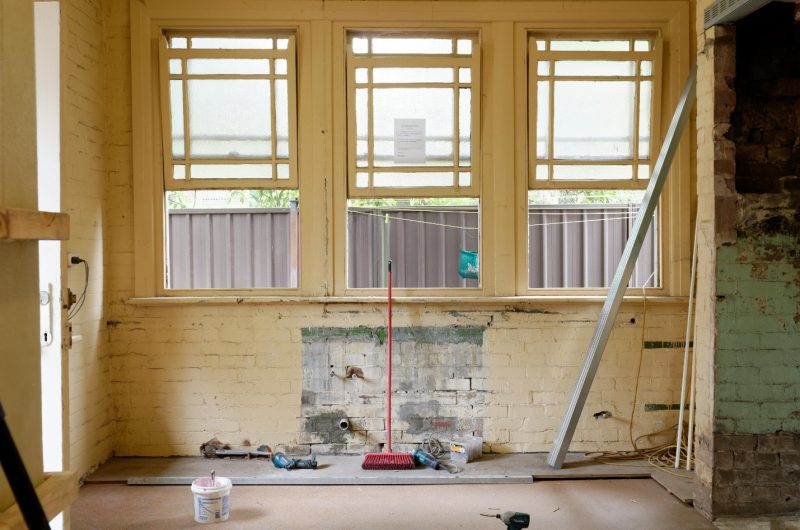Remodeling your house is an opportunity to transform your living space into a reflection of your personal style and to enhance your daily life with improvements that cater to your needs and desires. However, much like any significant voyage, the path to a successful home remodel is dotted with decisions, planning, and the occasional unforeseen challenge. From understanding the importance of a well-defined vision to the intricacies of budgeting and selecting the right contractors, every step you take should be deliberate and well-thought-out. This article talks about the essential considerations that will guide you through the remodeling process, ensuring your project starts on a solid foundation and also reaches a successful completion.
- Define Your Vision
Start by asking yourself what you hope to achieve. Are you looking to create more space, or is updating the aesthetics the main goal? Perhaps improving functionality is your primary concern. Whatever your objectives, having a clear understanding of them from the outset will serve as your project’s north star, guiding every decision you make. Take the time to gather inspiration, whether from magazines, online resources, or homes you admire in your community.
- Choose the Right Contractors
The success of your remodel heavily depends on the team you choose to bring your vision to life. The selection process should be thorough, prioritizing contractors with a solid reputation, relevant experience, and a portfolio of successful projects. For instance, if your remodel includes updating or replacing your roof, a contractor like Resnick Roofing & Contracting, known for their expertise and reliability, would be an invaluable asset. Don’t hesitate to ask for references and proof of insurance and licensing. The right contractor will provide quality craftsmanship as well as peace of mind throughout the remodeling process.
- Budget Wisely
Financial planning is the backbone of a home remodel. A well-constructed budget ensures that your project remains feasible and on track. Begin by determining how much you are willing and able to spend, then allocate funds to different aspects of the project, keeping in mind that unexpected expenses are more the rule than the exception. Incorporating a buffer of at least 10-20% for unforeseen costs can save you from financial strain down the line. Prioritize spending on structural and mechanical improvements that add long-term value to your home before allocating funds to cosmetic changes.
- Understand Permits and Regulations
Navigating the legal landscape of home remodeling is a critical step that cannot be overlooked. Each municipality has its own set of codes, permits, and regulations governing construction and remodeling activities. Failure to comply can result in costly fines and delays. Before beginning your project, research the requirements specific to Aurora and ensure that all necessary permits are obtained. This due diligence will ensure that your remodel meets all legal standards for safety and construction, safeguarding your investment.
- Plan for the Long Term
When remodeling your home, it’s wise to think beyond current trends and immediate needs. Consider how your life might evolve in the coming years and plan for flexibility and adaptability. For example, if you’re planning to age in place, incorporating universal design principles can make your home more accessible in the future. Similarly, choosing timeless materials and finishes can help ensure that your remodel remains stylish and functional for years to come. This long-term perspective will enhance your enjoyment of the home and also protect its value.
- Maximize Energy Efficiency
In today’s world, energy efficiency is not just a buzzword but a practical consideration that can significantly impact your home’s environmental footprint and your utility bills. Integrating energy-efficient solutions into your remodel can range from installing high-efficiency appliances and windows to upgrading insulation and heating systems. These improvements contribute to a more sustainable planet and offer financial savings over time. With energy costs on the rise, making your home more energy-efficient is a smart investment in both the short and long term.
- Focus on Key Areas
Remodeling offers the chance to make significant improvements to your home, but not all renovations offer the same return on investment. Focusing your efforts on key areas like the kitchen and bathrooms can dramatically enhance your home’s value and appeal. These spaces are central to daily life and often the first places potential buyers look when considering a purchase. Upgrading with modern fixtures, efficient layouts, and high-quality materials can transform these essential spaces into standout features of your home, ensuring your remodel pays dividends in both satisfaction and resale value.
- Consider the Flow of Your Home
The way you move through your home greatly influences your daily experience. A well-thought-out layout that promotes an easy flow between rooms can significantly improve the functionality and enjoyment of your space. During your remodel, consider whether certain walls could be removed to create an open floor plan, or if adding doors or windows could improve access and natural light. Adjusting the layout to suit your lifestyle can transform your home into a more cohesive and inviting space, making daily life more seamless and enjoyable.
- Personalize Your Space
While it’s wise to consider market trends and resale value, your remodel should ultimately reflect your personal tastes and lifestyle. This is your opportunity to infuse your home with your unique style, whether through custom joinery, bold color schemes, or distinctive finishes. Personalizing your space makes it more than just a house; it becomes a reflection of your identity and a place where you truly feel at home. Don’t shy away from making bold choices that resonate with your personal aesthetics; these are often what make your home memorable and special.
- Prioritize Lighting
Lighting plays a pivotal role in setting the mood and functionality of your home. A well-lit space can feel larger, warmer, and more welcoming. Incorporate a mix of lighting types, including ambient, task, and accent lighting, to create a versatile environment that can adapt to any occasion. Natural lighting should also be maximized wherever possible, as it boosts the aesthetic of your home and also benefits your health and well-being. Thoughtful lighting design can elevate the overall feel of your remodel, transforming ordinary spaces into extraordinary ones.
Conclusion
Completing a house remodel is an accomplishment that transforms your living space and also enriches your daily life. By focusing on key areas, considering the flow of your home, personalizing your space, prioritizing lighting, investing in quality materials, and staying flexible, you set the stage for a successful renovation. These considerations ensure that your remodeling project not only meets your current needs but also anticipates future trends and preferences, securing your home’s value and appeal for years to come.










